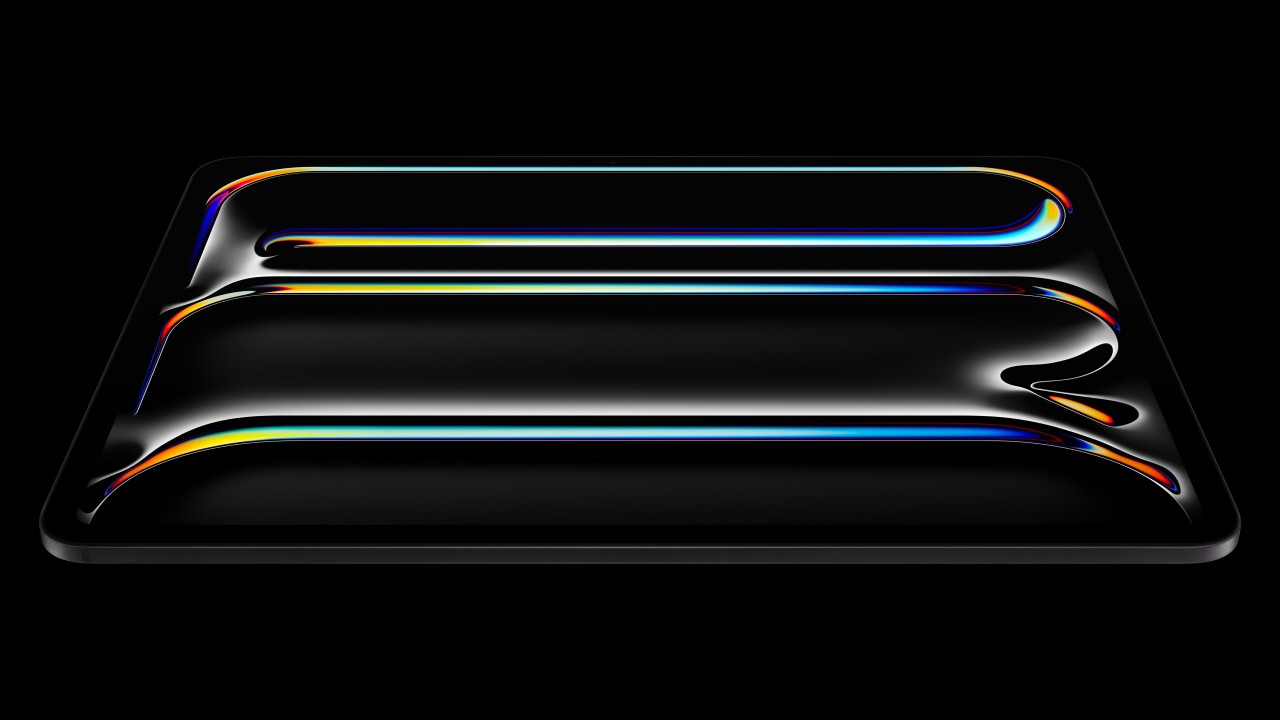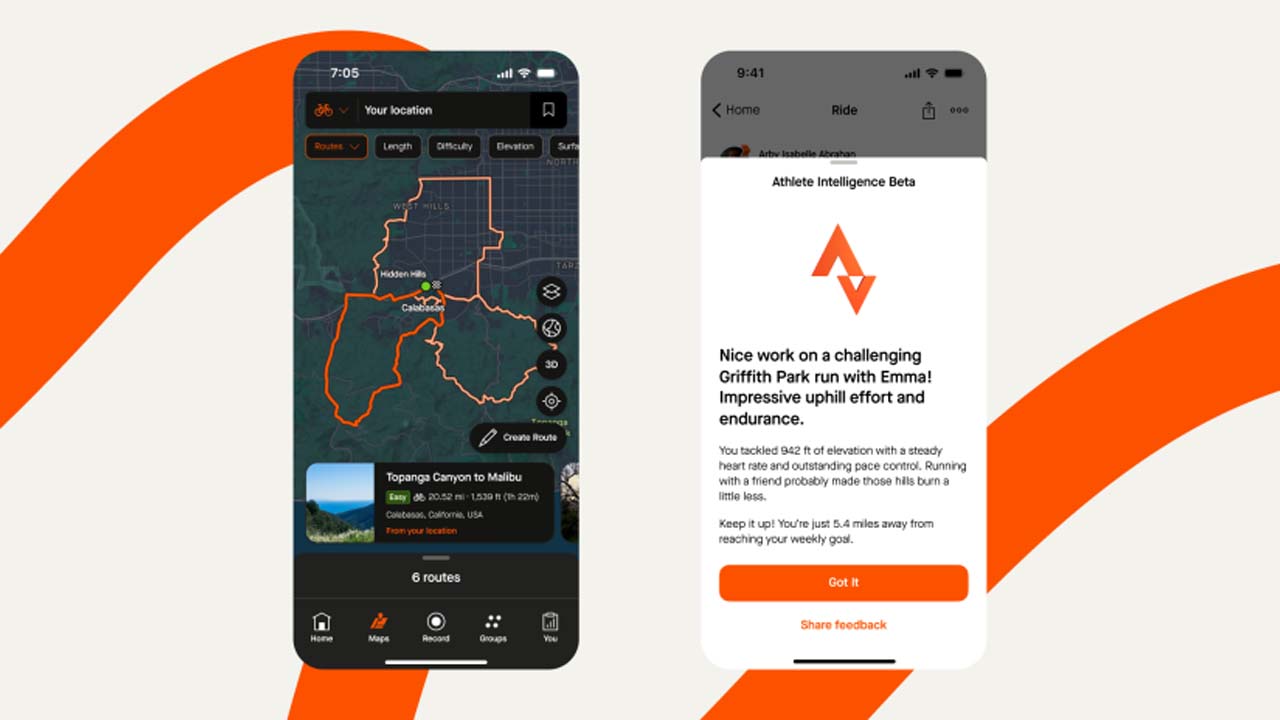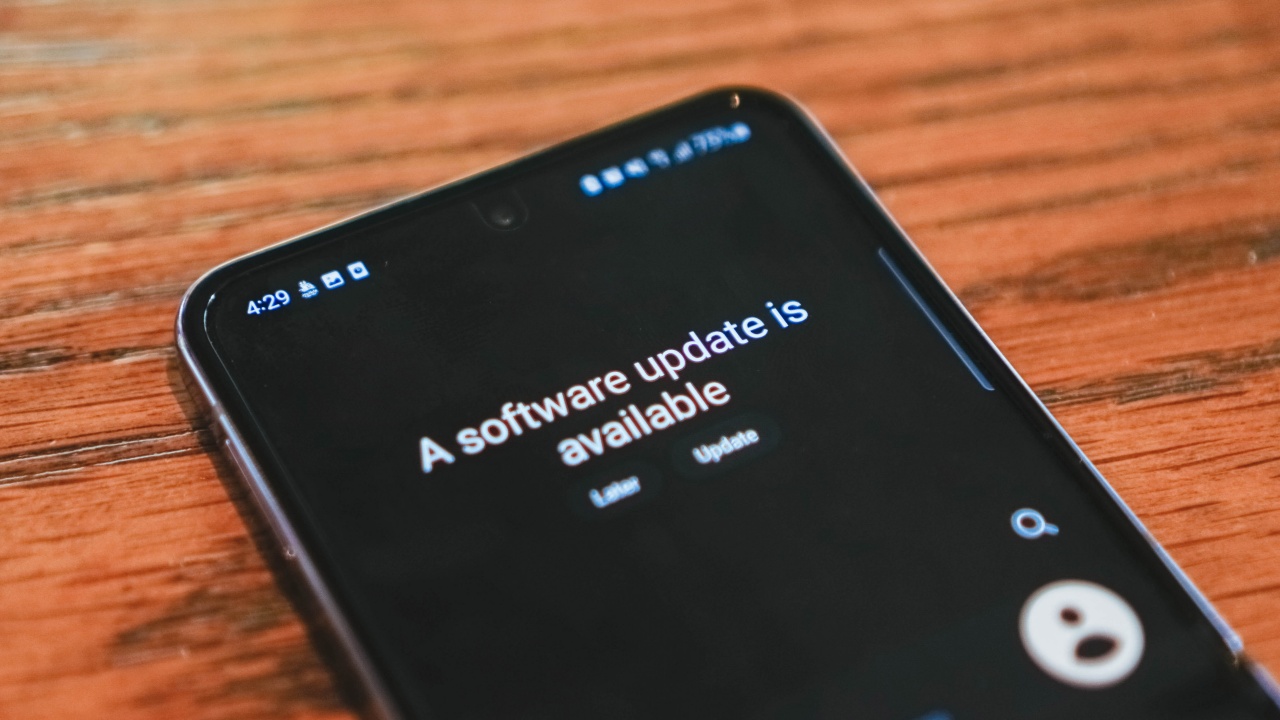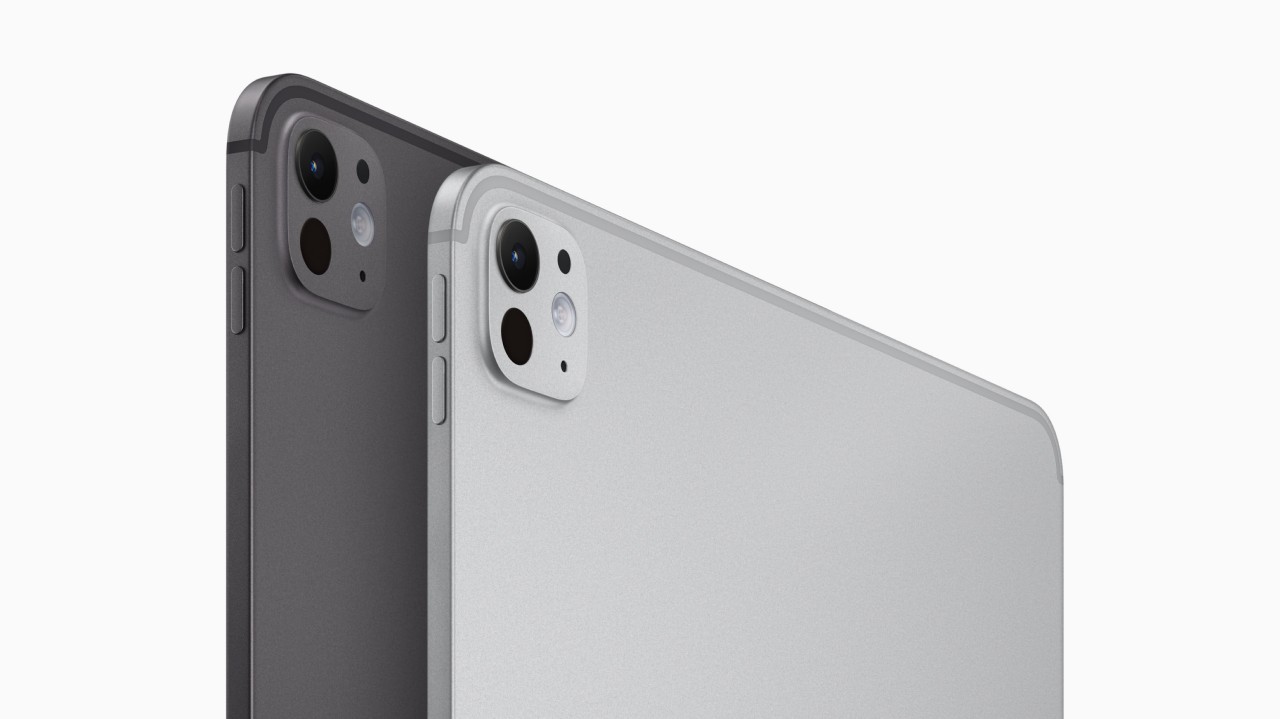News
iPad Pro with M4 chip now official
Apple Pencil Pro also announced

We knew it was gonna be new iPads and we weren’t disappointed. Top billing Apple’s May event is the iPad Pro powered by the M4 chip. It also comes with an advanced display and can be accompanied by the new Apple Pencil Pro.
Thin for the win
The new iPad Pro is the company’s thinnest product ever. The 11-inch model is just 5.3 mm thin, and the 13-inch model is even thinner at a striking 5.1 mm. The 11-inch model weighs less than a pound, and the 13-inch model is nearly a quarter pound lighter than its predecessor. Now that’s portable.
Most advanced display
A headline feature if the new iPad Pro is its Ultra Retina XDR display. It uses two OLED panels and combines the light from both to provide phenomenal full-screen brightness. The new iPad Pro supports an incredible 1000 nits of full-screen brightness for SDR and HDR content, and 1600 nits peak for HDR. That’s virtually unheard of.
For pro users, the new iPad Pro comes with new nano-texture glass options. It’s great for people in high-end, color-managed workflows or challenging lighting conditions.
Powered by the new M4 chip
Huge performance leap? Yessir. The M4 is built on second-generation 3-nanometer technology that’s even more power efficient. It’s perfect for the new iPad Pro.
M4 introduces pioneering technology for the stunning precision, color, and brightness of the Ultra Retina XDR display. The new CPU offers up to four performance cores and now six efficiency cores, with next-generation machine learning (ML) accelerators, to deliver up to 1.5x faster CPU performance over M2 in the previous-generation iPad Pro. M4 builds on the GPU architecture of M3 — the 10-core GPU includes powerful features like Dynamic Caching, and hardware-accelerated mesh shading and ray tracing, which come to iPad for the first time.
In simpler terms, that’s four times faster performance than the M2.
AI. Yes, AI
Like most devices these days, the new iPad Pro is also equipped with a Neural Engine for AI tasks. It’s capable of 38 trillion operations per second, which is 60x faster than Apple’s first Neural Engine in the A11 Bionic chip. The Neural Engine makes the new iPad Pro an outrageously powerful device for AI.
With iPad Pro with M4, users can perform AI-enabled tasks even faster, like easily isolate a subject from its background in 4K video with just a tap with Scene Removal Mask in Final Cut Pro.
Apple Pencil Pro
A Pro tablet deserves a pro stylus. Say hello to the Apple Pencil Pro.
A new sensor in the barrel can sense a user’s squeeze, bringing up a tool palette to quickly switch tools, line weights, and colors. It does all that without interrupting the creative process. There’s also a custom haptic engine delivers a light tap. It provides confirmation when users squeeze, use double-tap, or snap to a Smart Shape for a remarkably intuitive experience.
There’s a gyroscope allows users to roll Apple Pencil Pro for precise control of the tool they’re using. Rotating the barrel changes the orientation of shaped pen and brush tools, just like pen and paper. And with Apple Pencil hover, users can visualize the exact orientation of a tool before making a mark.
Price and availability
Customers can order the new iPad Pro with M4 starting today, May 7, at apple.com/store, and in the Apple Store app in 29 countries and regions. It includes the U.S. and Singapore, with availability in stores beginning Wednesday, May 15.
The new 11-inch and 13-inch iPad Pro will be available in silver and space black finishes in 256GB, 512GB, 1TB, and 2TB configurations.
The 11-inch iPad Pro starts at $999 (U.S.)/ S$1,499 (Singapore)/ PhP 72,990 (Philippines) for the Wi-Fi model, and $1,199 (U.S.) for the Wi-Fi + Cellular model.
The 13-inch iPad Pro starts at $1,299 (U.S.)/ S$1,999 (Singapore)/ PhP 94,990 (Philippines) for the Wi-Fi model, and $1,499 (U.S.) for the Wi-Fi + Cellular model. Additional technical specifications, including nano-texture glass options, are available at apple.com/store.


Strava is emerging as a top choice for runners worldwide. Though the app is rising in popularity, there are still some features that are notably missing. If you’re eagerly awaiting for a few to drop, the fitness app is rolling out highly requested features soon.
Naturally, the most requested feature is dark mode. Considered an essential these days, the mode is present in a lot of apps today. Finally, Strava is getting its own version. In an update coming later this summer, users can turn the lights off permanently or according to the device’s settings.
Though not the most highly requested feature, the app is also (inevitably) getting a healthy dose of AI. In Athlete Intelligence Beta, the service will use large language models to interpret and summarize a workout for users. Finished workouts won’t just be a series of arcane numbers anymore. The developing AI will translate these to language that any user can understand.
Additionally, Leaderboard Integrity will analyze recorded activities for any potential errors — intentional or otherwise. If the system detects that an activity feels improbable, it will alert users to change its classification or delete it altogether.
Finally, Strava is getting night heatmaps. Concerned users will soon have the ability to see the traffic in a particular trail between sunset and sunrise. If you’re concerned about the safety of a route, the app will notify you if a path is well-lit and well-travelled at night.
The app will launch these features soon for users worldwide.
SEE ALSO: Strava is getting a much-requested chatting feature

Another year, another interesting concept goes back to the warehouse. Five years ago, LG showcased a rollable OLED TV concept. At the time, the concept joined the trend of displays that just merged into your living room. Though LG Display soon put the concept up for sale, the experiment is now coming to an end. LG has cancelled the Signature OLED R TV.
For ages, LG has been known for its quirky form factor experiments. Who can forget the swiveling or the rollable smartphone? As you might know now, LG has since pulled out of the smartphone business, taking its lookers away from the market. The experiments never stopped, though. LG soon applied its design philosophies to its display business.
The Signature OLED R TV presented something unique but familiar to audiences. Though the form factor was certainly different, it was part of the ongoing trend for devices that could easily disappear into a room. Think of Samsung’s The Frame series of displays. Compared to Samsung, LG opted for a more mechanical approach to hiding its display when not in use.
However, according to the Korean publication Chosun, sales for the unique TV haven’t really gone well. As a result, the company is discontinuing the line. The set, which costed around US$ 100,000, is now unavailable for purchase.
Regardless, the company isn’t done with unique devices. It is reportedly scheduled to launch a transparent display later this year.
SEE ALSO: LG’s new 97-inch OLED TV displays media wirelessly
News
Android can automatically change your phone’s vibration strength
It’s called Adaptive Vibration

Vibration alerts are meant to be discreet. However, if your phone is on a hard surface, the formerly gentle buzz can turn into a jump scare. Now, as part of the ongoing developments for Android 15, Google is experimenting with a new feature called Adaptive Vibration.
Earlier this week, I/O 2024 introduced a host of features coming to Android 15. The most notable of which is an easier way to secure a device after it’s stolen. Days after the conference, the company is still introducing more features coming to this year’s major update.
As the name suggests, Adaptive Vibration will automatically adjust your phone’s vibration strength. Of course, even without the update, you can already manually adjust the strength per notification. In that way, you can easily tell what you’re getting, based on the strength of the vibration.
Adaptive Vibration works differently. The feature will use the phone’s microphone and other sensors to automatically determine the perfect vibration strength for where it is. For example, the phone will lower the strength if it detects that it’s on a table. Likewise, it will increase the strength if it’s on a soft couch.
To be clear, this feature is different from adaptive alert vibration. The latter turns down vibration strength if the phone is facing up. Adaptive Vibration, on the other hand, uses more context to determine strength.
The feature debuted in Android 15 Beta 2. Only testers will have access to the feature for now.
SEE ALSO: Android is making it harder for snatchers to steal your phone
-

 News5 days ago
News5 days agoA kid learned Tagalog just by watching La Luna Sangre on her iPad
-

 Reviews2 weeks ago
Reviews2 weeks agoXiaomi 14 Ultra Review: The Ultimate Camera Smartphone
-

 Gaming1 week ago
Gaming1 week agoROG Ally X announced
-

 Reviews6 days ago
Reviews6 days agoInfinix NOTE 40 Pro review: Built to endure
-

 Smartphones2 weeks ago
Smartphones2 weeks agoHMD Global revives the classic Nokia 3210
-

 Gaming2 weeks ago
Gaming2 weeks agoHades II is out now on Steam Early Access
-

 Gaming2 weeks ago
Gaming2 weeks agoHelldivers 2 review-bombed after Sony debacle
-

 Automotive2 weeks ago
Automotive2 weeks ago2024 Jeep Wrangler 4-Door Sport now in the Philippines
























